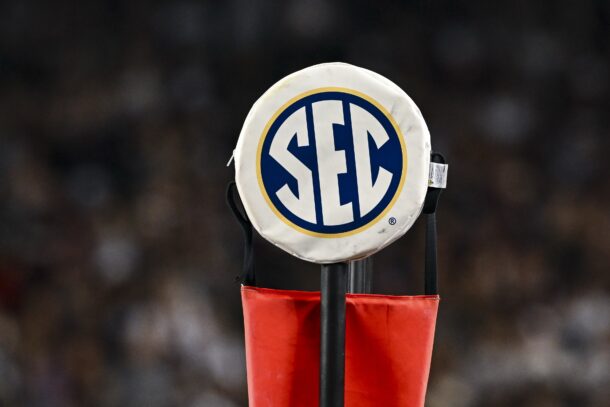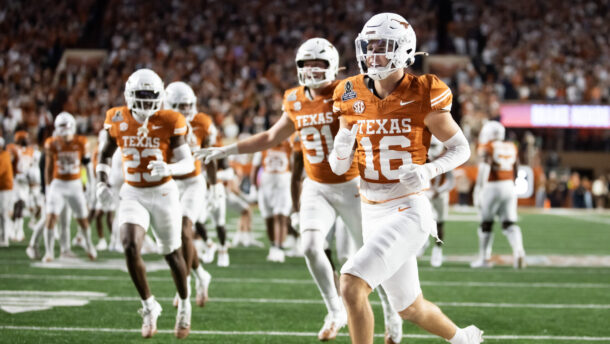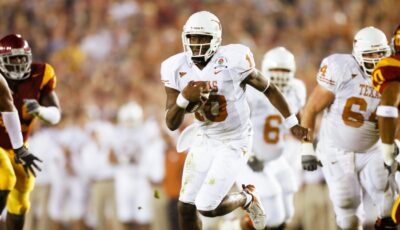Remember the 10-second pace of play rule proposal championed by Arkansas coach Bret Bielema, closely associated with Alabama coach Nick Saban and tabled by the committee back in March?
The rule itself may never resurface, much less get implemented. (For those buried in NCAA Tournament brackets and spring break plans at the time, the rule would have penalized offenses that snapped the ball within the first 10 seconds of the play clock.) However, the topic does accelerate the intrigue with varying offensive tempos in the SEC. The growing saturation of no-huddle, up-tempo offenses already has shifted the balance of power and may force teams to reconsider their identities.
Other than manufactured soap opera type drama, terrific for college football writers and fans with nothing better to talk about in March, the rule proposal was a minor blip. A forced 10-second hold rarely, if ever, would have prevented an offense from snapping the ball as soon as it wanted. It may have allowed defenses to substitute tired players more regularly. But the notion of a defender “separating” a receiver from the football now comes with the specter of a 15-yard penalty and possible ejection. Offenses are casinos in 2014, continually stacking the deck against defenses thanks to a one-sided rulebook. One take-back wasn’t going to suddenly force Baylor or Oregon into three yards and a cloud of dust.
But the rhetoric surrounding the debate was particularly slanted in favor of offense, even in the SEC. Hugh Freeze, Gus Malzahn and Kevin Sumlin vocally opposed the rule. Steve Spurrier even smugly called it the Saban Rule.
Ole Miss, Auburn and Texas A&M, along with Missouri, all relied pretty heavily on the spread, depending on how you define it. (Auburn runs more of an up-tempo power run game with options to read the defense.) Tennessee and LSU likely will add some spread concepts in 2014. Johnny Manziel is out, but Mississippi State’s Dak Prescott is one of several quarterbacks with scrambling ability. We’ve reached the point where set-in-stone pro-style offenses are the minority.
So how will pace of play and offensive style impact the conference in 2014?
Don’t expect too many contests like LSU 9, Alabama 6 in OT in 2011. Two games last season illustrate the new SEC: Alabama 49, Texas A&M 42 in a much-hyped September contest, and Auburn 59, Missouri 42 in the SEC Championship. In fact, in the last four seasons, the winner of the SEC Championship has averaged 47.3 points in Atlanta. So much for defense wins championships, right? (Alabama even gave up 28 and nearly allowed a last-second game-winning touchdown in 2012.)
I suspect too that the proliferation of fast, productive offenses will continue to turn young, athletic SEC quarterbacks into stars at a faster rate. (Hello, Maty Mauk and Brandon Harris?)
The SEC West in particular will be interesting. Bielema appears determined that his Razorbacks will cling to the playbook and philosophies he imported last season from Wisconsin, for better or worse. If there’s any merit to baseball-style metrics, he may be onto something by focusing on the undervalued commodity, facing less competition for bulky, road-grading offensive linemen and immobile, pocket-passing quarterbacks. The problem, though, is that he’s been so vocal about his beliefs, even pointing to “death certificates” as a reason why the 10-second rule should have been implemented. He should expect some consternation, or at least old-fashioned shaming, from opposing fan bases, especially if the Arkansas defense gets hammered.
Then there’s Alabama. Detractors have oversold the idea that Saban’s defenses can’t handle the spread. Remember, this team shut out a ranked Ole Miss squad, 25-0, last season, got revenge against the reigning Heisman Trophy winner in Manziel and came within a missed field goal return of knocking off the SEC champions. That hardly qualifies as failure, even by Bama’s elevated standards. But last year’s Crimson Tide certainly wasn’t athletic enough on defense. Playing with a 3-4 front puts the onus on having athletic, disruptive outside linebackers who can pressure the quarterback, provide outside containment and chase down speedy running backs in coverage.
In truth, Alabama has not matched up well against these types of offenses, though the weakness isn’t as exaggerated as some portray it. But it’s a personnel problem, not a problem with scheme. By recruiting a few more smaller, fast-twitch outside linebackers, getting more athletic at defensive end and returning the secondary to normal, Saban and coordinator Kirby Smart should be able to alleviate many of the concerns. Teams will try to wedge themselves into any small crack they can find against Alabama, though, as long as the Tide keeps winning, and the team will face no shortage of up-tempo attacks in 2014.
There’s also recruiting. Bielema and Saban have tried to make reasoned cases that pro-style offenses better prepare players for the NFL. That may be true to an extent and at certain positions, though try telling that to a 17- or 18-year-old quarterback, receiver or running back when you’re selling him against a script that goes something like this: “Do you like to score touchdowns and pile up yards? Do you know how many points we averaged per game last season? Come to our school and we’ll fling the ball all over the field. We move so fast and score so much, everyone’s getting their share of stats. Come be the next Robert Griffin III!” Plus, more and more NFL teams are implementing elements of the spread (with an eye on Chip Kelly in Philadelphia), or at least being more open-minded about players who don’t fit prototypes.
Ultimately, teams win football championships with talent across every unit. Florida State’s defense was more talented than Auburn’s last year, at least in the eyes of NFL evaluators. The same goes for Seattle’s win against Denver in February’s Super Bowl.
An up-tempo, no-huddle or spread offense isn’t a magic elixir that guarantees wins. It does take advantage of the current rules, plays well on TV and makes for an easy sell to high school players and fan bases. With little apparent advantage on the field and in recruiting gained by avoiding the trend, expect the SEC to plant itself squarely in the up-tempo current for 2014 and beyond.
An itinerant journalist, Christopher has moved between states 11 times in seven years. Formally an injury-prone Division I 800-meter specialist, he now wanders the Rockies in search of high peaks.







